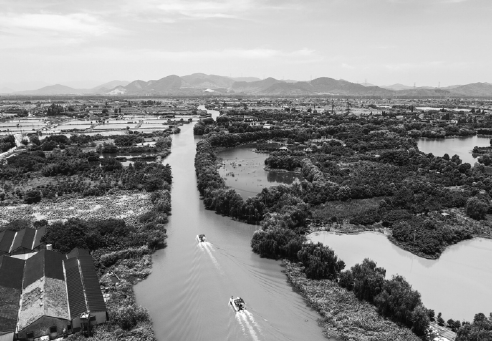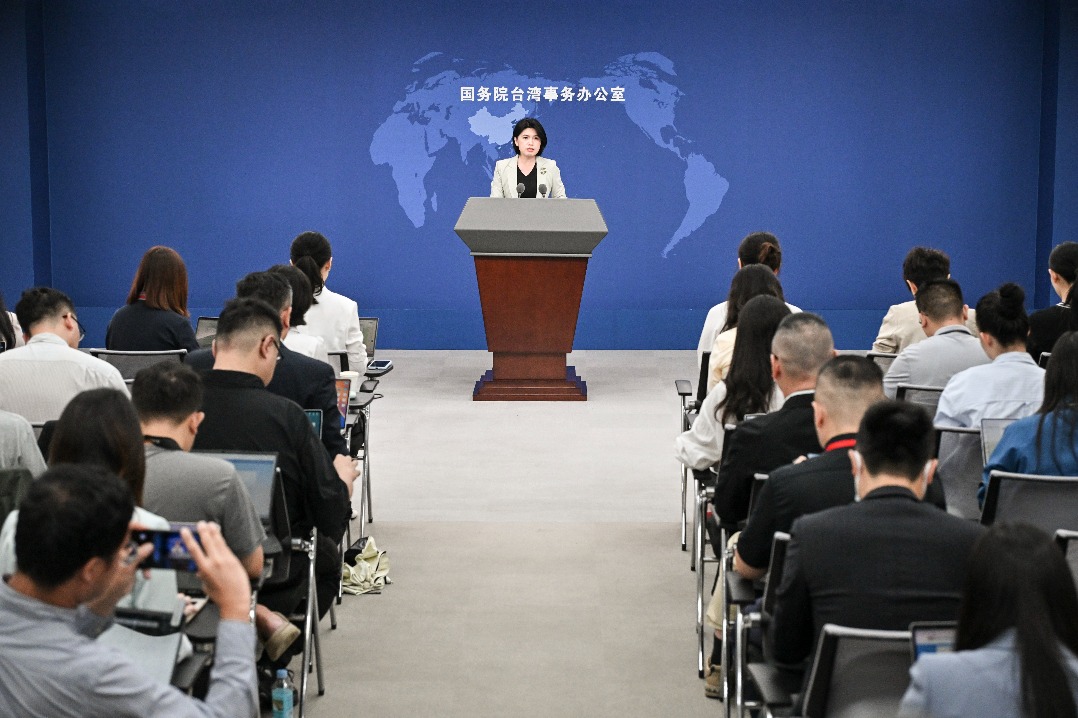Financing picking up speed amid carbon control efforts
14th Five-Year Plan period (2021-25) crucial for China's climate initiatives

China's green financial market is unveiling huge business opportunities for global capital as infrastructure and technology upgrade programs await funds to cut carbon emissions in the next few decades, experts said.
Tsinghua University in Beijing predicted that to achieve net zero carbon emissions-or carbon neutrality-by 2060, about 138 trillion yuan ($21.36 trillion) will be invested. This would mean funds equal to over 2.5 percent of the country's annual GDP should be invested into this area per year.
US-based investment group Goldman Sachs recently modeled a potential path to net zero carbon by sector and technology, saying $16 trillion in clean technology infrastructure investment in China by 2060 could create 40 million new jobs and drive economic growth.
Global investors said the goal is very ambitious when top Chinese leadership announced in September an objective to reach a peak in carbon dioxide emissions before 2030 and achieve net zero carbon emissions 30 years later. And they expect the 14th Five-Year Plan period (2021-25) will be crucial for China's climate efforts.
Based on that, Goldman Sachs developed an annual decarbonization investment profile, which projected an acceleration of investments to peak in 2040, driven largely by the initial infrastructure expansion required for power networks, charging infrastructure and heating pipeline infrastructure. The investment will accelerate the penetration of electrification and clean fuel substitution in transportation, heating and general industry, it said.
Chinese financial regulators saw this ambitious goal as a milestone that may require a fundamental transformation of entire social and economic systems, with the financial system playing a crucial role.
Yi Gang, governor of the People's Bank of China, the central bank, previously talked about the major tasks of 2021, and highlighted the need to facilitate financial support for green development following the government's net zero carbon pledge.
Financial policy should make efforts to facilitate resource allocation, risk management and market pricing, along with an improvement of green finance standards, statistical work and regulation, Yi said.
He called for financial institutions and other enterprises to disclose information on carbon emissions to the public. For programs with low carbon emissions, they can apply for loans at relatively lower interest rates.
Yi added that China will build carbon emission trading markets and develop carbon futures trading.
Michele Della Vigna, an economist with Goldman Sachs International, said: "To achieve this goal, it will require China to embark on an ambitious multi-decade effort to transform its economy and energy ecosystems. Net zero would have to serve as a guiding principle for policymaking that is comprehensively embedded into structural reforms, investment policies and innovation priorities."
Some policies made by central financial regulators and some local government measures such as discount and guarantee mechanisms for green development projects have encouraged investment of social capital, said Ma Jun, a member of the monetary policy committee of the PBOC and head of the Center for Finance and Development of Tsinghua University.
Local governments, in the meantime, may need to develop customized roadmaps to achieve carbon neutrality, and they should be encouraged to take the lead in achieving this goal, Ma said.
More financial institutions in China should also disclose environment-related information, he added.
Globally, only China and the European Union have so far set up clarified standards of classification for green finance, and the China-EU Shared Classification Catalogue for Green Finance is expected to be completed this summer, said Zhu Jun, director-general of the PBOC's International Department, during a virtual seminar of China Finance 40 Forum on Jan 31.
China and the EU are approaching the unified standards, and some economies are awaiting results, which indicates that the two sides have jointly come to the forefront of the world in this regard, Zhu said. If this work can be completed on time, the world will see the first set of international standards for green finance in July.
Tianneng Co, a lithium battery producer in Huzhou, a green finance pilot city in Zhejiang province, raised about 4.87 billion yuan from its listing on the Science and Technology Innovation Board of the Shanghai bourse on Jan 18. It then became the first company in this sector to issue both A and H shares.
The funds, as the firm's Chairman of the Board Zhang Tianren said, will be injected into projects including green intelligent manufacturing technology transformation, high-energy power lithium battery cells and some projects to improve the innovation capacity of national technology centers.
As a company shifting to a "green development" model and away from producing traditional batteries, Tianneng is supported by preferential financial policies introduced by the central bank and the local government in Huzhou, which leverages lower-cost equity and debt financing instruments to expand production lines, according to Chang Qing, vice-president and chief financial officer of Tianneng Co.
Tianneng Co is not the only example. Several miles away in Huzhou is Zhejiang Dadongwu Construction Science & Technology Co, a developer of steel structures and fabricated buildings, which uses new environment friendly materials.
A branch of Shanghai Pudong Development Bank has issued 150 million yuan of loans for specifically supporting construction of a green building integrated industrial base. China Zheshang Bank and Industrial Bank's Huzhou branch had jointly issued 460 million yuan of loans to the company as of November.
By 2020, China's outstanding green loans exceeded 11 trillion yuan, ranking top globally, while outstanding green bonds stood at more than 1 trillion yuan, the world's second highest, according to the central bank.
"China's green-finance market continues to grow, supported by government policies and initiatives, with banks playing a dominant role. Domestic and foreign investors will drive standardization and environment, social and governance integration in onshore greenbond markets," said Jia Jingwei, a sustainable finance analyst at Fitch Ratings, a global credit ratings agency.
In the meantime, the structure of the green bond market has undergone significant changes.
Banks were previously the major issuers of green bonds for capital raising activities, but starting from 2019, banks have helped underwrite more green bonds issued by non-financial corporates than they have issued themselves, the Goldman Sachs report showed.
However, the huge development potential may also pose challenges for China's banks, analysts said, and non-performing loans will matter most. That will influence the sustainability and healthy growth of green finance.
Vigna said this is consistent with the PBOC's financial deleveraging campaign, which started in 2017, to abate systemic risk and encourage an appropriate risk pricing mechanism.
During the next five years, China is expected to officially launch a nationwide emission trading system after nearly a decade of pilot testing and discussions, experts said.
The PBOC's Zhu also suggested charging carbon taxes and injecting carbon tax incomes into social security funds.
And a system of policy incentives and constraints should be established, with more loans issued at preferential rates to carbon emission reduction programs and the risks of green assets weighted scientifically, Zhu quoted PBOC Governor Yi as saying during the annual work conference in January.



Today's Top News
- Export of trade in services a priority
- SCO helping develop a multipolar world order
- Tajikistan looks to China for deeper ties
- High-tech manufacturing lifts industrial profits
- Avenue blooms with flowers to mark victory
- Mainland slams DPP for distorting WWII history






























